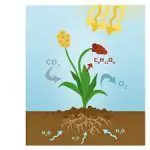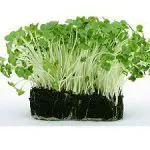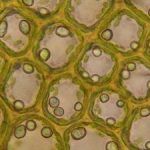The critical and the common distinction between the two types of forests is the in 'Evergreen forests' as the name says the trees do not shed their leaves in any season, until and unless they are old which are soon replaced by the others. On the other hand, 'Deciduous forests' shed their leaves in the dry season to save the water loss. Evergreen Forests are found in the area … [Read more...] about Difference Between Evergreen and Deciduous Forests
Botany
Difference Between Photosystem I and Photosystem II
The two main multi-subunit membrane protein complexes differ in their absorbing wavelength, where the photosystem I or PS 1 absorbs the longer wavelength of light which is 700 nm while photosystem II or PS 2 absorbs the shorter wavelength of light 680 nm. Secondly, each photosystem is replenished by the electrons, after the loss of an electron, but the sources are different … [Read more...] about Difference Between Photosystem I and Photosystem II
Difference Between Stems and Roots
The part of the plant which is present above the surface of the soil is called Stems, while Roots is the part of the plant which is present below the soil surface. Secondly stems arises from the plumule and roots from the radical of the embryo. Most importantly stems possess leaves, but roots do not. A common flowering plant (vascular plants) possess a well-defined root and … [Read more...] about Difference Between Stems and Roots
Difference Between Vascular and Non-Vascular Plants
Vascular plants or tracheophytes are known for their proper organization of the systems, and bearing flowers, green leaves, stems, roots, woods, and branches, on the contrary, Non-vascular plants or bryophytes do not perfectly fit with these features. Examples of Conifers, Ferns, flowering, and non-flowering plants are examples of vascular plants, while Mosses, Liverworts, and … [Read more...] about Difference Between Vascular and Non-Vascular Plants
Difference Between Parenchyma, Collenchyma and Sclerenchyma Cells
Parenchyma cells are the type of living plant cells, which are known for healing and repair mechanism, and food storage. Collenchyma cells are known for providing mechanical support to the plants, by protecting the delicate inner part of the plant. Sclerenchyma cells are the matured dead cells and are found in wooden part or hard stem of the plant. Likewise the humans, who … [Read more...] about Difference Between Parenchyma, Collenchyma and Sclerenchyma Cells





